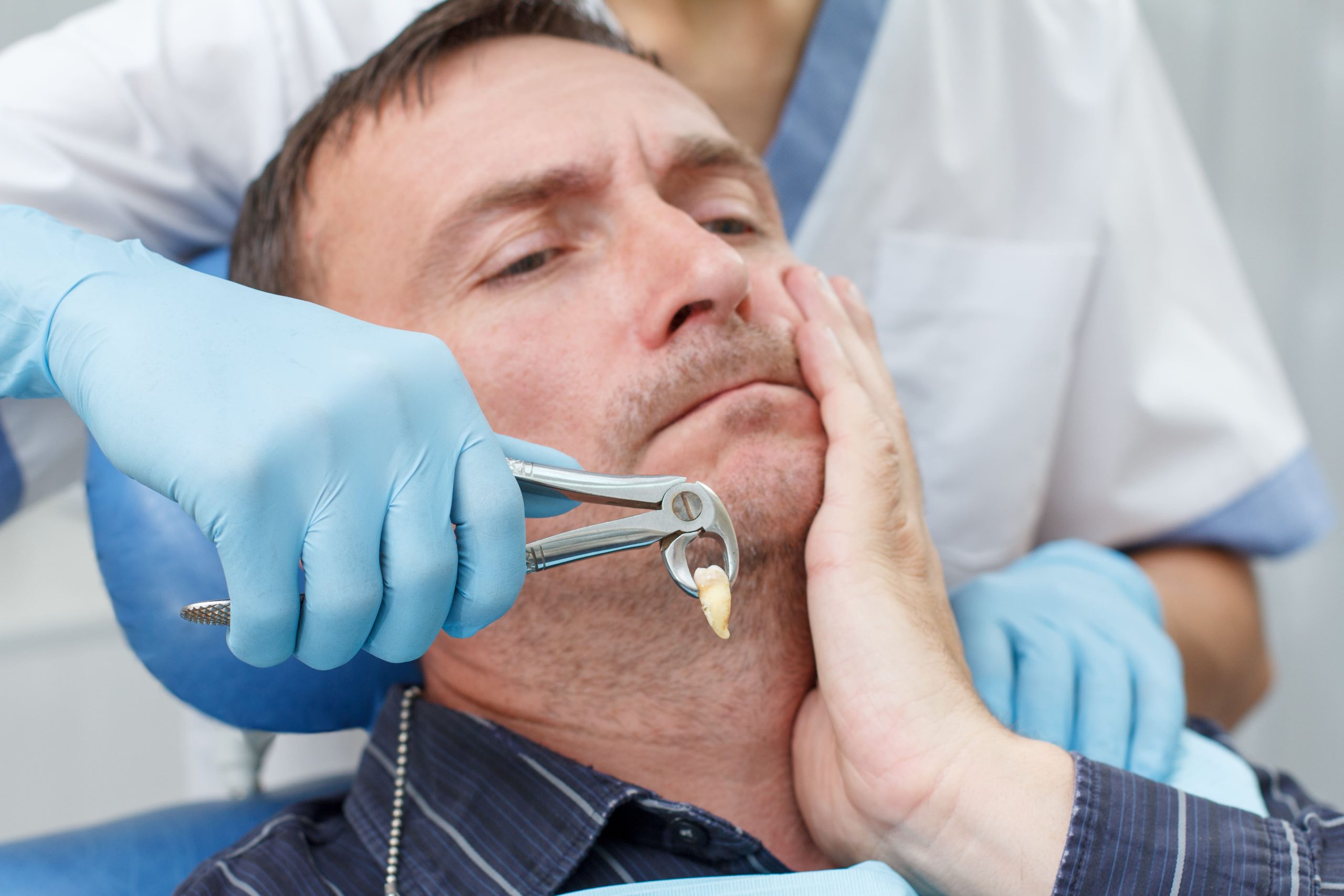Home » Why Can’t They Pull a Tooth if It’s Infected?
There can be many reasons why a dentist won’t pull an acutely infected tooth. To an extent, it all comes down to the risk of spreading the infection. In some cases, a tooth may appear to be the cause of a problem; however, the origin of the pain may be much more widespread or deep-set. Understanding this can help patients feel empowered to seek dental care while having realistic expectations and less anxiety about a dental emergency.
The Danger of Infection Spread
An infection can quickly spread from a tooth to other surrounding parts of the mouth or body. Bacteria associated with dental infections may have found a home inside of a tooth and spread further into the gums, jaw, or bloodstream. An extraction of an acutely infected tooth can put bacteria into the bloodstream if the surrounding tissue isn’t visibly infected or inflamed.
The result of the infection entering the bloodstream can lead to severe complications including cellulitis or sepsis. In more extreme cases, the infection may spread throughout other parts of the face, neck, and skull and even to the brain.
A dentist will need to take special care before any extraction to ensure the severity and the location of the infection. The dentist may even suggest avoiding extraction or trying to stabilise the infection with antibiotics or drainage prior to any tooth removal.
Reducing Pain and Swelling First
Acute dental infections are often accompanied by pain, swelling, and inflammation. In such cases, tooth extraction may be more difficult and traumatic. The tissues around the tooth may be inflamed and fragile, making it harder for the dentist to extract the tooth cleanly. Swelling can also increase the risk of complications during and after the extraction, such as excessive bleeding or delayed healing.
Treating the infection first helps to reduce pain and swelling, creating a safer environment for extraction. By taking this step, the dentist can reduce both immediate risk and long-term complications.
Role of Antibiotics in Tooth Extraction
Antibiotics may be used to manage an acutely infected tooth. Antibiotics are helpful because they help to control the infection and can make it safer to extract by reducing the associated inflammation. Antibiotics alone, however, will not cure an infection if the source of the infection remains (i.e. an infected tooth still in your mouth). An acutely infected tooth will still likely need to be removed once it is no longer in acute condition.
It is important to take all of the antibiotics exactly as prescribed. It is not ok to stop taking antibiotics early because you are no longer in pain. If the full course is not completed, the bacterial infection can rebound and cause longer treatment and delay in extraction.
Alternatives and Interim Measures
Sometimes dentists use alternative measures to manage infection before extraction. These can include:
- Incision and drainage: Creating a small opening to allow pus to escape, reducing pressure and pain.
- Root canal treatment: In certain cases, cleaning and sealing the tooth can resolve infection without removal.
- Pain and anti-inflammatory management: Over-the-counter medications or prescription painkillers help manage discomfort until the tooth can be safely extracted.
These measures are designed to protect the patient’s overall health while still addressing the infection effectively.
When Is Extraction Safe?
After the infection is controlled, the dentist can safely extract the tooth. The swelling and inflammation are usually gone, or at least significantly reduced. There is also less risk of bacteria spreading during the extraction process. Healing after the tooth is pulled is also more predictable and less likely to be complicated.
The reason dentists don’t pull an infected tooth right away may be annoying. However, they do this in the best interest of the patient’s safety. Pulling a tooth when there is an acute infection in the surrounding tissues can increase the risk of serious and even life-threatening complications, such as spreading the infection to other parts of the body.
By treating the infection first with antibiotics, drainage, and other procedures, dentists can ensure that extraction is a safe and effective treatment.
If you have tooth pain or suspect an infection, it is important to contact an emergency dentist as soon as possible. Treating the infection early can help control the infection, relieve pain, and ensure that tooth extraction, if necessary, is performed safely for both immediate and long-term health.

